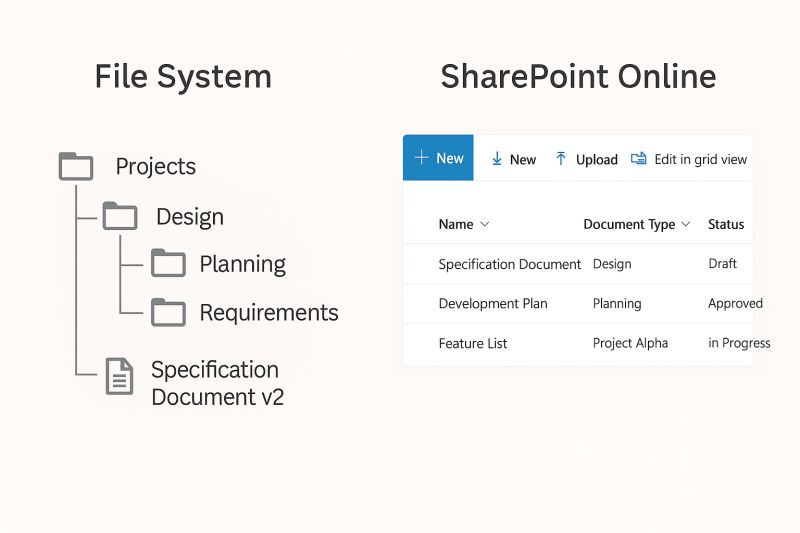Copilot for SharePoint: Why AI Won't Fix a Messy Environment
- Armagan Kilic
- May 15
- 2 min read

The overlooked weak point of Copilot
Microsoft 365 Copilot is getting a lot of attention. The idea sounds promising: AI that helps summarize content, find information faster, and support daily work more intelligently.
But there's one thing people often forget.
Copilot works with what's already there. And that's where the problem starts.
Copilot doesn’t create structure
Copilot doesn’t clean up or organize your content. It doesn’t know which document is outdated or sensitive. It processes everything it finds, without knowing what’s relevant or current.
What I often see:
Deep folder hierarchies with no metadata
Unclear permissions, often maintained manually
No retention policies or archiving
Outdated content still visible and active
Duplicate document libraries across different sites
If Copilot faces a setup like that, it will simply surface that same disorder. You’ll get results, but based on a system that was never built for clarity.
SharePoint Online is the foundation
Even if users mostly work in Teams or OneDrive, the technical foundation is often SharePoint Online. That’s where document libraries, permissions, metadata, version history and retention policies come into play.
If the SharePoint structure is messy, it directly affects Copilot’s usefulness.
What matters before activating Copilot
You don’t need a perfect system. But a few basics should be in place before enabling Copilot across the organization.
Recommended steps:
Use metadata and content types instead of deep folders
Manage permissions through groups, not individuals
Archive or delete outdated content
Enable and maintain versioning
Establish naming conventions
Review libraries and Teams for duplication
Assign content ownership
These steps are not flashy, but they make a huge difference. Copilot can only help if the environment it works in is logically structured.
What I often see in projects
In many organizations, SharePoint has grown without a clear plan. New Teams were created on the fly, sites duplicated, content moved around. Permissions were granted ad hoc.
It worked because no one looked too closely. But with Copilot, the lack of structure becomes visible.
The AI doesn’t make a mess. It simply reveals what already exists.
Final thoughts
Copilot can be a valuable tool if the foundation is stable. But without structure, it just amplifies the issues.
Before rolling it out, take a closer look at how your Microsoft 365 environment is actually organized.
If you're unsure where to start, I’d be happy to help with an analysis or review of your SharePoint Online setup.


Comments